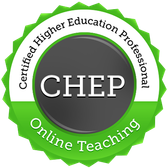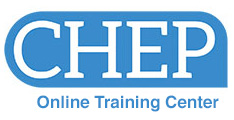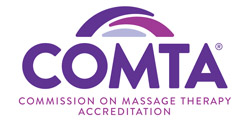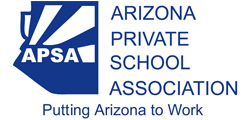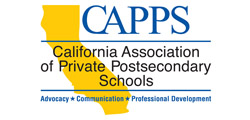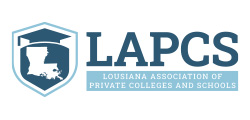Badge Evidence | Completed Courses (4 Hours Each)
CM107-CRDSustaining a Culture of Compliance: The Role of Faculty and Staff
This course is designed for either an institution's full or part time staff and faculty members. The course focuses on building and sustaining a campus-wide culture of compliance as opposed to simply providing a multitude of standards and regulations. In short, CM107 hopes to provide the information staff and faculty need to say or do the right things when interacting with both prospective and enrolled students about their education - online or face-to-face - as well as the consequences of saying or doing the wrong things whether by mistake or with intent. Components on ethics, customer service and fostering a culture of compliance in the new normal of educational delivery are also included.
This is a private course intended for associates employed by Concorde Career Colleges.
EL102Online Teaching Techniques
Your degree of success as an online instructor relies heavily on several factors, among which are your level of preparedness before the date on which the course is launched; your ability to make a smooth transition into the roles and responsibilities associated with teaching in an online environment; and the effectiveness and efficiency with which you manage learners, instructional transactions embedded in the course as well as the learning environment. In this course, you will learn how to project your authority and presence into the e-learning environment, build a relationship with each learner, promote and nurture learner participation, provide informative and constructive feedback in a timely manner, minimize attrition, manage communications, manage unacceptable behavior and resolve disagreements.
EL104Teaching and Organizing a Virtual Learning Environment
This course will provide you with basic information to teach in a virtual learning environment and understand the importance of organizing course content. You will learn about the important role technology tools play in teaching and organizing an online course. You will also learn the difference between synchronous and asynchronous learning. As the components of each are discussed, you will further identify appropriate methods, develop guidelines, organize content, and establish a pattern of teaching for each method.
EL105ROnline Language: Communicating with Students
This course provides information to help you effectively communicate with students and encourage communication among students in an online environment. You will learn the importance of facilitating instructor-to-student (I2S), student-to-instructor (S2I), and student-to-student (S2S) communication. Digital technology tools play a vital role in the modern communication process, and several are discussed in this course. In addition, discussion is provided to help you further understand how to manage and measure communication in an online course and help students communicate effectively.
EL108Preparing Students to Become Good Online Learners
This course will provide you with strategies and techniques to help prepare students for the online environment. To do so, you must also assess your strengths and weaknesses as an online instructor. As you help students assess their readiness for online learning, you are also preparing them for the expectations and realities of the online environment. By identifying students' strengths and weaknesses, you can provide guidance to help them achieve the learning outcomes. This course not only notes the necessary technical skills, it also discusses non-technical skills as well as techniques for successful learning and helping students develop their online persona.
EL112Workload Management Strategies for Teaching Online
This course will provide you with strategies and techniques to help you reduce your workload in the online environment. The course begins with an overview of good principles for education and questions to consider prior to developing Workload Management Strategies (WLMS). This course also provides WLMS for teaching online, communicating and collaborating, and revising your online course.
EL113Active Learning in an Online Environment
This course will provide you with a basic overview of the background and history of the popular instructional method called active learning. This method differs from traditional educational methods such as the lecture model. Active learning has a definite place in education especially in the online learning environments. It is used to support teaching outcomes like critical thinking skills, interpersonal skills and knowledge acquisition that all instructors wish for their students. However, active learning it calls for a change of attitude on the part of students and the instructor in order to be successful. But the advantages far outweigh the disadvantages as it can make students enthusiastic about learning. Learn about this brave new world of teaching and learning for the next generation.
EL117Understanding Personality Traits of Online Instructors and Learners
This course will provide you with an overview of online instructors' and learners' personality traits. Participants will be provided with information about the traits themselves, as well as how to identify such traits, utilize them, and develop lessons to reach all students.
EL119Virtual Internships
This course will provide you with an overview of virtual internships. Virtual internships are also referred to as remote internships, virtual placement programs, and virtual co-ops. Virtual internships have been implemented in many online programs in various settings. This course will provide a working definition and information pertaining to various components of virtual internships. It is essential for instructors working with virtual interns to share this information with employers and students to help prepare them for virtual internships.
EL120Fully Online Doesn't Mean Inactive
Active and passive learning are critical concepts to ponder for online learning. Each one has positive benefits when explored and applied in the context of learning and the designing of instruction. There is, however, a difference between passive and inactive. One is an intentional part of learning while the other is the absence of something. We will explore these and other concepts in this course. In addition, strategies will be shared that will enable educators to make their online instruction more engaging and beneficial for learners.
EL121Teaching Skills and Trades Online
Although online learning is becoming more normalized in our educational institutions, there are still many questions about its effectiveness for certain areas of study and training. There remains an idea that online learning is mostly passive and therefore unsuitable for anything active and specifically the development of skills and trades. This course will explore the changing realities of online learning and how effective it can be in the training of skills and trades. Strategies will be shared to facilitate the online teaching of applied skills in simulated and real-world settings.
EL141Engaging Online Learners
This course will explore the online learning landscape and how to ensure learner engagement remains high, even when working virtually. The course discusses various aspects of online education, as well as discussing techniques for both social and motivational forms of engagement and how to apply them appropriately in courses.
The goal of this course is to help develop a better understanding of the topic and produce tangible resources to help implement plans, strategies, and ideas at your school. In addition to lecture videos, links to possible resources, and assessments, you will be able to utilize the Journal and Learning Activities. Take advantage of a method that best works for you.
EL201ROnline Communication: Engaging and Retaining Online Learners
Research shows that supportive working relationships between students and institutional personnel are vital to student retention. For online students, these relationships are especially essential in preventing a sense of isolation and detachment from their academic experience. Because interactions with online students are most likely to occur via phone and text-based methods, developing retention-supporting relationships can be challenging. This course teaches online communication strategies that foster connection and engagement with online learners. Participants will develop a deeper understanding of (a) retention and attrition research, (b) online learning, and (c) technology's unique role in both the relationship-building process and the online student experience.
HE106CStudent Information, Rights, and Safety
In this lesson, you'll review the federal and accreditation standards governing the collection and disclosure of student information. In addition, federally mandated campus safety standards that impact operations at postsecondary institutions are reviewed.
Topics covered in this lesson include:
- Family Education Rights and Privacy Act (FERPA)
- Record of Complaint
- Title I of the Student Right-to-Know
- School Safety Enhancements Act
This is a custom version of HE106 providing a certification of completion.
